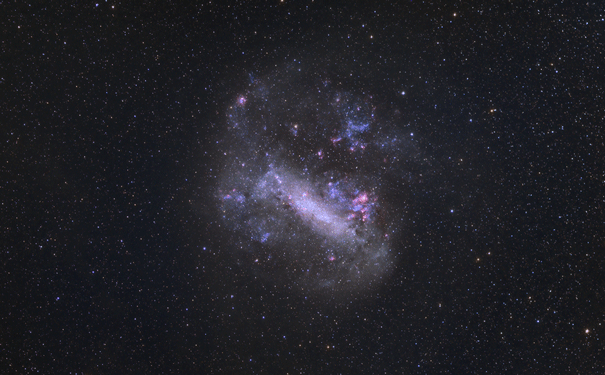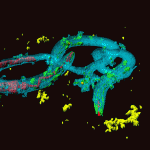
The Large Magellanic Cloud is a type of dwarf spiral galaxy. Image: John A Davis
Or maybe even two…scientists have found a group of galaxies that look just like ours.
At first glance the Milky Way seems to be fairly typical galaxy system, but if you take into account its neighbours — the Magellanic Clouds — it’s actually very rare. Other galaxies have smaller galaxies in orbit around them, but very few of these are as big as the Large and Small Magellanic Clouds (LMC and SMC).
Our galaxy could even have been considered one of a kind, until scientists surveying the local Universe found two very similar examples. “We’ve never found another galaxy system like the Milky Way before, which is not surprising considering how hard they are to spot,” says Dr Aaron Robotham, from the University of Western Australia’s node of the International Centre for Radio Astronomy Research and the University of St Andrews, Scotland.
In order to locate these galaxies, Robotham and his colleagues used data from the Australia-based GAMA survey, the most detailed map of our local Universe available, to survey the hundreds of thousands of galaxies out there. “Everything had to come together at once: we needed telescopes good enough to detect not just galaxies but their faint companions, we needed to look at large sections of the sky, and most of all we needed to make sure no galaxies were missed in the survey,” he explains.
To be considered similar to the Milky Way, the galaxies not only had to have a similar mass; they also needed to have close-by companions that were at least as massive as the LMC and SMC. Only three per cent of the galaxies that are similar to ours had companion galaxies, which Robotham says is very rare indeed.
The scientists found a total of 14 galaxy systems that are similar to ours, with two of these being an almost exact match.”The most similar were two where all objects — already selected to be similar in mass — had significant amounts of star formation, like the Milky Way, LMC and SMC, and had disky structure — again, like us,” Robotham says.
They also found that while companion galaxies like the Magellanic Clouds might be rare, when they’ve found they’re usually near a galaxy like the Milky Way. However, as there are only a few of them, Robotham suggests that they probably won’t be around for long. “If they were long lived then we expect to see more of them in the wider Universe.”






